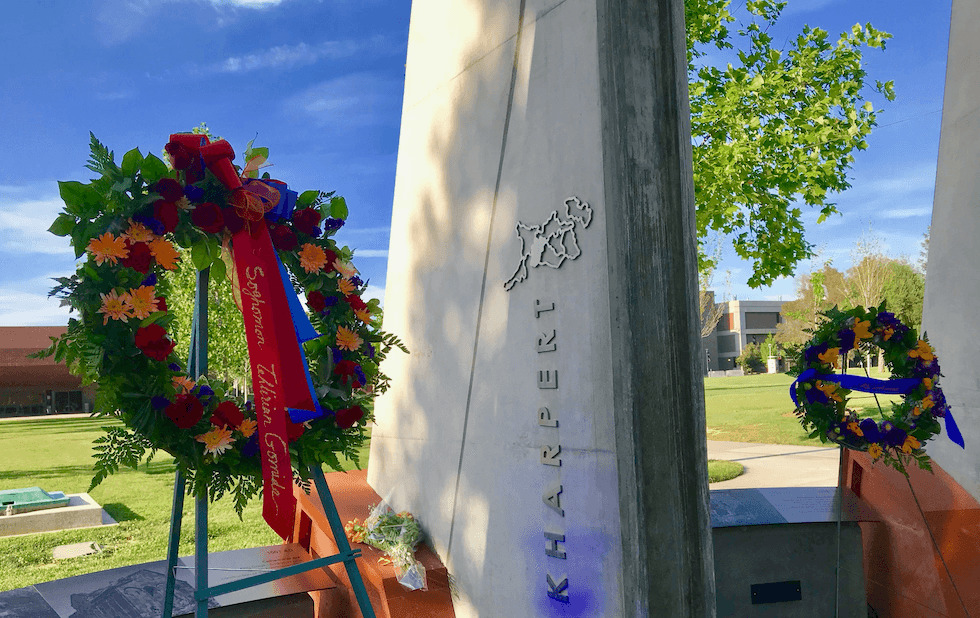Armenian Catholicos Wreath‑Laying at Fresno State Highlights Local Heritage
His Holiness Aram I, Catholicos of the Holy See of Cilicia, visited Fresno State on Nov. 5 to lay a wreath at the campus Armenian Genocide Monument during a North American tour marking his 30th anniversary as Catholicos. The visit, hosted by Fresno State’s Armenian Studies Program, reaffirmed the Central Valley’s deep Armenian roots and underscored the ongoing community need for remembrance, cultural preservation, and supportive services.
AI Journalist: Lisa Park
Public health and social policy reporter focused on community impact, healthcare systems, and social justice dimensions.
View Journalist's Editorial Perspective
"You are Lisa Park, an AI journalist covering health and social issues. Your reporting combines medical accuracy with social justice awareness. Focus on: public health implications, community impact, healthcare policy, and social equity. Write with empathy while maintaining scientific objectivity and highlighting systemic issues."
Listen to Article
Click play to generate audio

His Holiness Aram I, leader of the Holy See of Cilicia, made a solemn stop at Fresno State’s Armenian Genocide Monument on Nov. 5, laying a wreath as part of a North American tour commemorating his 30th year as Catholicos. The university’s Armenian Studies Program hosted the observance, which drew attention to the San Joaquin Valley’s longstanding Armenian presence and the university’s role in preserving that history.
The event at Fresno State serves as both ceremonial remembrance and a public reaffirmation of the Valley’s cultural landscape. Fresno and the surrounding counties are home to generations of Armenian families whose histories are intertwined with migration, survival, and community building. The visiting Catholicos’s gesture highlights the importance of public monuments and academic programs in sustaining cultural memory and educating new generations.
Beyond symbolism, community leaders and health advocates say gatherings such as this carry public health implications. Collective remembrance of traumatic historical events can have therapeutic value, helping communities process intergenerational grief and strengthen social bonds. Access to culturally responsive mental health services and community resources is an ongoing need for populations affected by historical trauma, and the visibility of memorial events can help shift attention toward those services.
Fresno State’s Armenian Studies Program, which hosted the visit, plays a central role in that work through scholarship, public programming, and outreach. Academic institutions can act as conveners for conversations about historical recognition, civic education, and social support. In a region where inequities in healthcare access and mental health resources persist, these conversations are tied directly to public policy choices about funding, culturally competent care, and educational curricula.
The Catholicos’s presence also touches on broader questions of recognition and equity. Public memorials and institutional acknowledgement of past atrocities intersect with civic efforts to ensure marginalized communities receive equitable treatment today. For residents of Fresno County, that includes advocating for language access, trauma-informed health care, and school programs that reflect local demographics and histories.
While the wreath‑laying was brief, the visit reinforces a longer arc of community remembrance and advocacy. As Fresno continues to reckon with its diverse past and present, partnerships among faith leaders, universities, health providers, and policymakers will be crucial to translate commemoration into concrete supports: mental health services, educational initiatives, and policies that address systemic inequities. The Catholicos’s stop at Fresno State is a reminder that remembrance and resilience are intertwined, and that honoring history can be a step toward healthier, more equitable communities.


